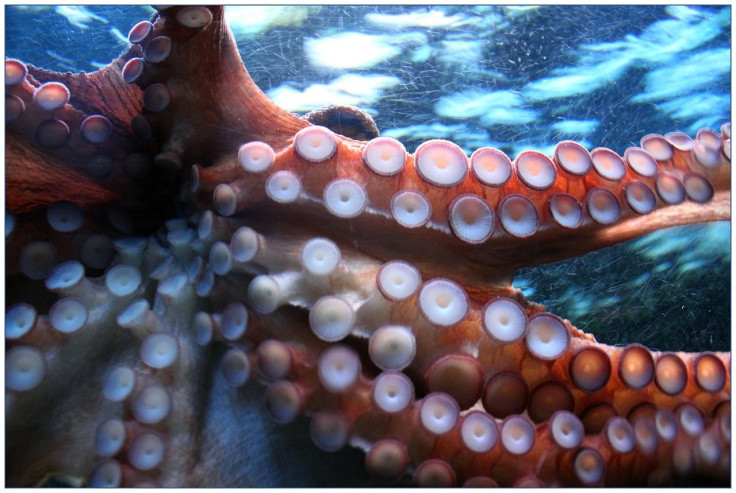Scientists Uncover Truth Behind The Only Octopus Species With A Shell [Photo]
KEY POINTS
- Octopuses in the genus Argonauta have shells on their body
- It is only the females that carry a shell
- The shell also plays the role of an egg case
A tiny octopus with a shell of its own has puzzled scientists for many years. They have been trying to find out how this species got its protective covering.
Octopus, squid and cuttlefish belong to a group called cephalopods (which are also mollusks) and they do not have shells outside their bodies. Some species like the cuttlefish and the ram's horn squid (Spirula spirula) have internal shells.
Nautilus is the only species of cephalopod to exhibit a true outer shell. The shell is complete with air chambers that allow Nautilus in regulating buoyancy as it floats through the open oceans.
The shell of the Nautilus, and those of the now-extinct cephalopod ancestors, had proteins with minerals such as aragonite and calcite in complex microscopic structures, reported ScienceAlert.
The ancestors of all modern cephalopods reportedly had such shells in some shape and form. These shells are believed to have originated in the Ordovician period, at least 440 million years ago.
Out of the group, octopuses and squid have either completely lost their shells or have only vestigial remains. Then, why do octopuses in the genus Argonauta have shells on their body?
Scientists Think They've Cracked The Mystery of This Cute Octopus And Its 'Shell' https://t.co/AoUPkm9dYl
— ScienceAlert (@ScienceAlert) October 29, 2022
A team of researchers might have found an answer to this in their latest study, published in the journal Genome Biology and Evolution.
They did a genetic analysis of Paper Nautilus or greater argonaut (Argonauta argo) and found a unique origin for its protective casing.
Only female argonauts carry shells. Moreover, the females grip the shell with their arms instead of it being attached to the mantle. The shell is also said to play the role of an egg case. The eggs are brooded within the protective shell by the females, unlike most other octopuses, who hide their eggs away on a substrate like a seabed.
The females produce the protective spiral shell by releasing calcifying proteins from their arms. The shape of the casing looks identical to that of the Nautilus, yet microscopically it couldn't be more different.
A team of researchers from Japan, led by Shimane University marine biologist Masa-aki Yoshida, did DNA sequencing of Argonauta argo. The genome was then compared to those of other mollusks, including the California two-spot octopus (Octopus bimaculoides) and the Nautilus.
"Consistent with previous results, most of the proteins are apparently not shared with the shell matrix proteins of [cephalopods and relatives], including those of Nautilus," the team wrote in their paper.
Some of the genes and the proteins were similar to those found in other shelled mollusks like the limpet (Lottia gigantea) and Japanese pearl oyster (Pinctada fucata), while some had resemblances to shell-less octopuses.
The findings point out that argonauts evolved their shell using proteins unrelated to ancestral shell formation. In other words, the shell of the argonaut was completely reinvented from scratch.

© Copyright IBTimes 2024. All rights reserved.





















